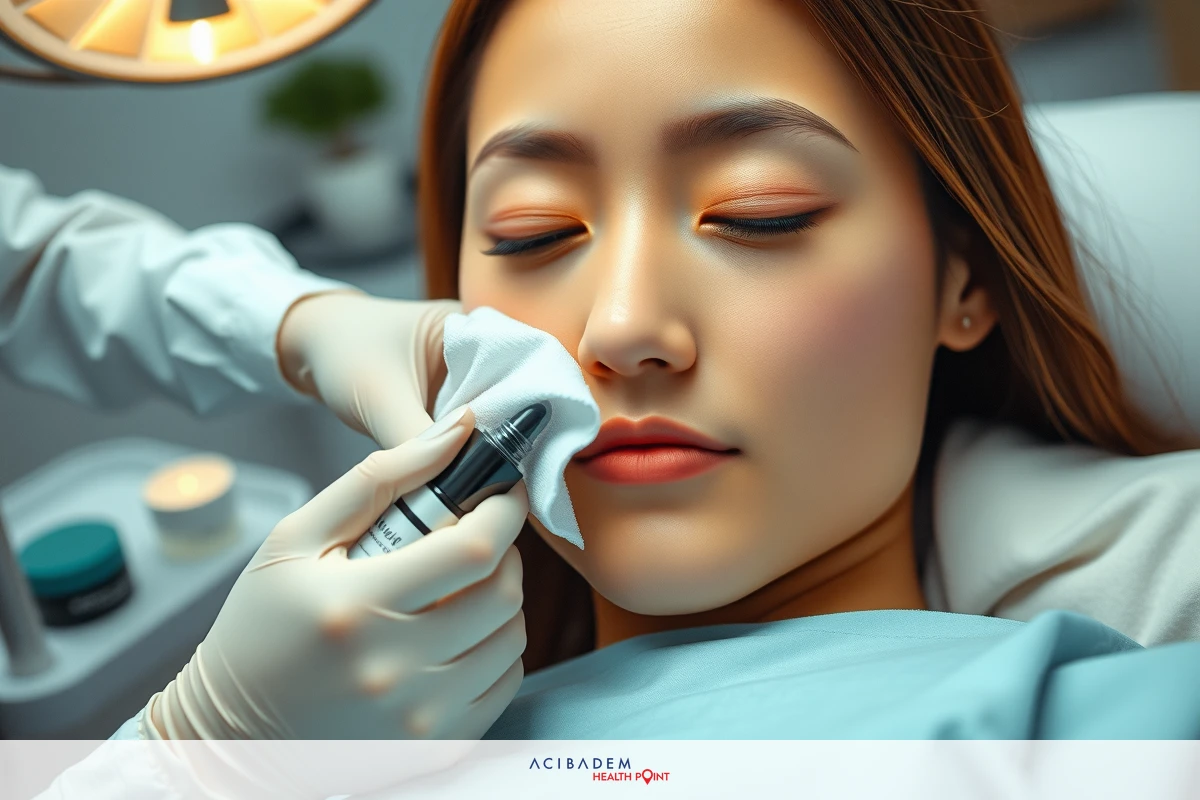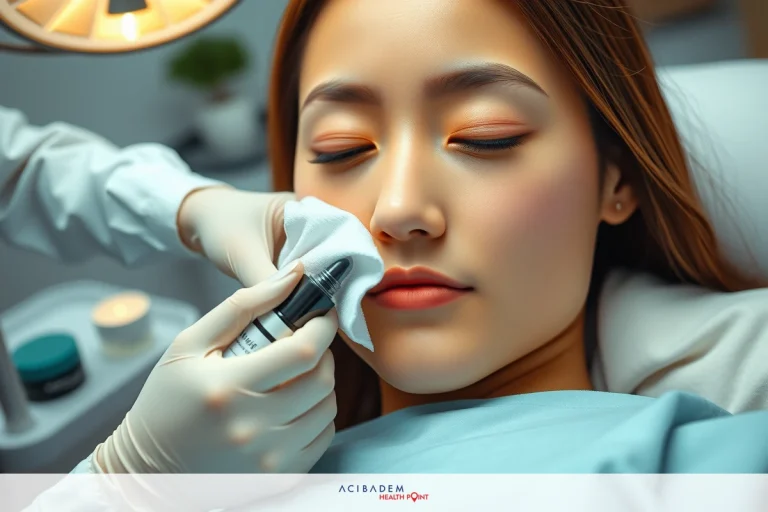How to Avoid Crust in the Nose After Rhinoplasty
How to Avoid Crust in the Nose After Rhinoplasty Rhinoplasty, a type of surgery modifying the nose’s structure, often results in an uncomfortable aftermath: crust formation. This discomfort can extend the recovery period and lead to unnecessary distress for patients who have just undergone this intricate procedure. Essential care practices during recovery play a vital role in mitigating such complications.
Maintaining nasal hygiene serves as one cornerstone of post-rhinoplasty care. It encompasses routine cleansing activities that minimize potential irritations or infections. Moisturizing the nasal passages is another integral part of the healing process; it keeps tissues hydrated and facilitates their repair, thereby reducing crust formation chances. Lastly, gentle cleaning techniques offer effective ways to manage any unavoidable crust without causing harm or impediment to your recovery journey.
Proper Nasal Hygiene
Nasal hygiene stands as a robust shield in your defense against post-rhinoplasty crust formation. It encompasses practices that ensure the cleanliness and health of your nasal passages, which are especially vulnerable after surgery. Cleanliness is paramount when you consider the sensitive nature of the internal nose tissues during recovery; even minor irritations can trigger crust development.
One fundamental aspect of maintaining good nasal hygiene involves gentle yet regular cleaning. A saline rinse serves as an effective tool to cleanse without causing undue stress on delicate tissues. The process involves flushing out dust particles or any other foreign materials that could potentially incite irritation and subsequent crust production. As part of your daily routine, it’s imperative to incorporate this practice into your early morning schedule as well as before bedtime.
While ensuring cleanliness within the nostrils, care must be taken not to over-cleanse either. Stripping away too much natural moisture can leave the nose dry, creating an environment conducive for crust buildup—a condition we strive to avoid throughout rhinoplasty recovery. Therefore, striking a balance between cleanliness and retaining necessary moisture becomes critical in our quest towards optimal nasal hygiene post- surgery.
The journey towards full recovery after rhinoplasty is indeed demanding but achievable with proper measures such as diligent nasal hygiene practices aimed at
preventing crust formation.
Moisturizing the Nasal Passages
The moisture within our nasal passages plays an essential role in maintaining overall health and comfort. In a post-rhinoplasty scenario, this aspect of care becomes even more significant due to its direct impact on crust prevention. Adequate hydration of these tissues aids in healing and reduces the likelihood of dryness that may lead to crust formation.
It might seem counterintuitive initially, but moisturizing your nose after rhinoplasty is not about adding excess liquids. Rather, it’s about preserving the natural moisture levels that the sensitive mucous membranes need for recovery. One way to achieve this balance is through the use of saline sprays or drops regularly throughout the day. These products can offer relief from dryness without over-hydrating tissues—an essential factor in avoiding crust development.
Another method involves using humidifiers—particularly during sleep—to maintain optimal humidity levels around you. By ensuring a moist environment, we indirectly contribute towards keeping our nasal passages hydrated as well; thus reducing chances for unwanted crust buildup during rhinoplasty recovery period.

Maintaining adequate moisture inside your nose post-rhinoplasty acts as a key deterrent against unnecessary complications such as crusting. It ensures smoother healing while also promoting long-term comfort—a crucial goal for anyone recovering from such surgery.
Gentle Cleaning Techniques
The aftermath of rhinoplasty often presents a challenging task: removing the inevitable crusts without causing harm to delicate nasal tissues. It becomes crucial to utilize gentle cleaning techniques that not only clear away these discomforting formations but also safeguard against potential irritations or damage.
One popular method involves using soft cotton swabs dampened with saline solution. The key lies in being as tender as possible to avoid any unnecessary pressure on sensitive areas. Start by gently swabbing around the nostrils, avoiding deep insertion into the nasal passages. This practice can be performed multiple times throughout the day—each time ensuring you’re neither too harsh nor too intrusive in your cleaning efforts.
Another technique utilizes steam inhalation; it provides dual benefits—a natural way for loosening up crust and promoting overall comfort during healing phase after
rhinoplasty surgery. You can do this by filling a bowl with hot water, covering your head with a towel, and then inhaling the rising steam cautiously for several minutes at a stretch.
Gentle cleaning techniques are more than just an approach towards how we remove crust post-rhinoplasty; they represent our commitment towards fostering a conducive environment for steady recovery while minimizing discomfort throughout this journey.
Frequently Asked Questions
How long after rhinoplasty can I start my nasal hygiene routine?
Generally, you'd want to wait a few days post-surgery before starting any cleaning regimen. However, always follow the specific instructions provided by your surgeon as timelines may vary based on individual recovery rates and surgical details.
What kind of saline solution should I use for nose moisturizing and cleaning?
Over-the-counter saline sprays or homemade saltwater solutions are typically safe for regular usage. When making a homemade solution, ensure that it's isotonic—meaning it has the same concentration of salt as your body fluids—to avoid irritation.
Over-the-counter saline sprays or homemade saltwater solutions are typically safe for regular usage. When making a homemade solution, ensure that it's isotonic—meaning it has the same concentration of salt as your body fluids—to avoid irritation.
Over-the-counter saline sprays or homemade saltwater solutions are typically safe for regular usage. When making a homemade solution, ensure that it's isotonic—meaning it has the same concentration of salt as your body fluids—to avoid irritation.
Can steam inhalation replace other gentle cleaning techniques?
Steam inhalation offers some benefits such as loosening crusts and providing comfort during healing but does not directly clean the nostrils. Therefore, while helpful, it shouldn't be considered a replacement for direct cleaning methods like swabbing with saline solution.
Are there any signs indicating that my nasal passages might be too dry post-rhinoplasty?
Persistent discomfort or frequent formation of thick crusts could indicate excessive dryness in your nasal passages. If you notice these symptoms despite following recommended care practices, consult with your healthcare provider promptly.











